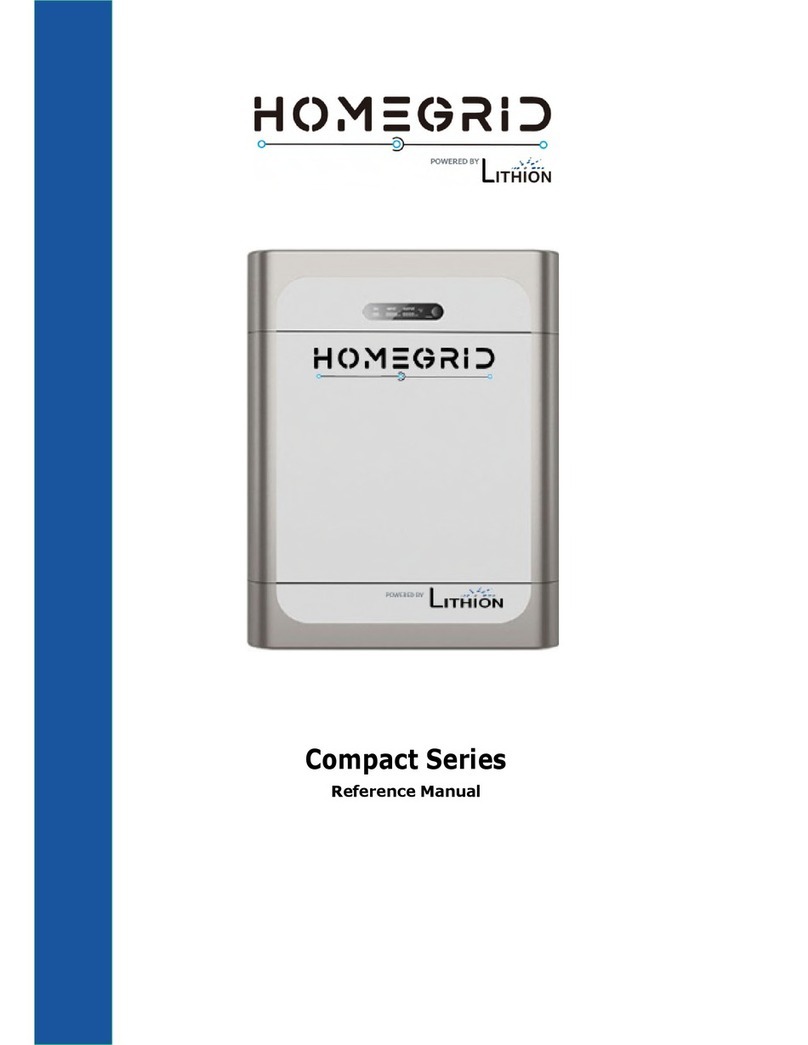
Charger Current:
The recommended charge current of the modules is ≤0.5C. The battery
may be charged at higher C rates under certain conditions. Please contact Lithion Customer
Support for guidance. Inappropriate charging may lead to premature aging of the battery and
voiding of the product warranty.
Caution:
Inappropriate fast charging may lead to excessive temperature
rise, premature aging of the battery and voiding of the warranty.
Important Information Regarding XP Series Modules
The U-Charge
®
XP modules must be charged under the control of the U-BMS. The
battery monitor communicates with each of the batteries and sends information to
the charger to control the charging process.
Systems with high voltage may require safety interlocks. Please check local
electrical codes for regulations and compliance. The current from the charger should be
controlled in all situations.
An external, series connected, safety device such as a contactor controlled by
the U-BMS , is essential to prevent over-charging, short circuits and
over-discharging.
one another; a load bearing frame or tray should be used when stacking
modules.
Since these batteries are sealed and have no free electrolyte, they can
be mounted in almost any orientation, although terminals up are
recommended.
*If the battery must be mounted on its side, Lithion recommends that the terminals
are positioned towards the top of the battery.
Suggested Installation Location and Orientation
It is recommended that the general guidelines are followed when choosing the
installation for your modules.
FOR DETAILS REFER TO U-CHARGE USER MANUAL.
Do not install U-Charge
®
power systems near heat generating equipment.
Do not install U-Charge
®
power systems in a location where water or road
spray can reach any surface of the module.
In applications where vibration and shock is likely, use flexible insulated
copper cables. Solid bus bars should only be used for stationary applications.
Secure the modules on all sides to prevent movement.
Modules are not load bearing and not designed to sit directly on top of






















